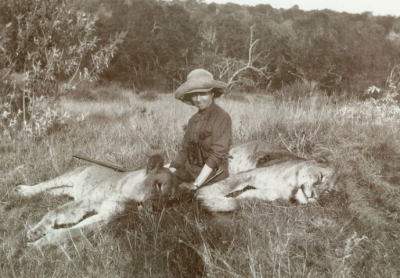|

The decline started a long time ago…
Earlier this year, the IUCN published their “much awaited” (and about 2 years late) Red Book report on the status of Africa’s lions. Well, it was “much awaited” by some– including organizations like CITES, the EU, perhaps the USFWS, etc – but we should have known what was coming.
You can read the entire report here - it is not all that long. The report is about Indian and African lions – strange as the two populations face very different conservation requirements. I’ll focus only on the African lions.
Basically, the report on the status of Africa’s lions is based on 45 “relatively well monitored populations” and their trends from 1993 to 2014. From those numbers, the report mentions that lions in those sample populations DECLINED by 66% in western and central Africa (actually, not one single central African population was examined, something the IUCN seems to have overlooked), DECLINED by 59% in eastern Africa and INCREASED by 8% in southern Africa. Overall, lion populations were predicted to have declined by about 43% based on observed rates in sample populations - and that number is important.
You see, a 43% decline over three generations is not quite enough to list lions as “endangered” on the IUCN Red List. Of course, the 66% decline in the western (and central?) African lions certainly places them on the “endangered” list, and maybe the 57% decline in the eastern African lions will also confer an “endangered” listing, but overall, the African lions were saved by the increase in southern African lions and to some extent by the positive trend in the Indian lions.
Sighs of relief from the trophy hunters –they can still hunt in Namibia, South Africa, Zimbabwe, Zambia and Mozambique, an activity of which the IUCN approves.
But let’s have a real close look at the IUCN report shall we?
The first thing to look at is where the numbers they used came from. Don’t bother looking at the Bibliography – they ain’t there. It would appear that the IUCN relied heavily on a single publication by Craig Packer and dozens of other co-authors in a 2013 paper entitled “Conserving large carnivores: dollars and fence” (Ecology Letters 16(5): 635-641). Packer began assembling the data for that paper long before it was published, and some of the information (mine for example) dates back at least ten years before the paper was published. Some data came from “personal communications” from researchers, meaning they did not have to justify their data in any scientific way. Also, the IUCN report uses data from 1993 as a comparison. Where did that data come from? I know for a fact that many of the populations listed as the 45 “relatively well monitored populations” were not being monitored in 1993.
So, no real data from 1993, and no real data for 2014. How can the IUCN justify the numbers?
The second thing to look at is the southern African data, where there was supposedly evidence of an increase of about 8%. However, of the 23 populations examined, 15 are fenced. Of those 15 fenced populations, all but two (Etosha NP in Namibia and Kruger NP in South Africa) are heavily managed and to some extent artificial. The IUCN Red Book has no guidelines for dealing with fenced populations, and after much hand-wringing the authors decided to include these populations in the overall population trends. Did inclusion of these populations make a difference to the overall numbers? Well, by including them the southern African lion population numbers rose from 4,887 in 1993 to 5,265 in 2014. By excluding the fenced populations (but leaving in Etosha and Kruger as large and natural areas), the population numbers were 4,640 in 1993 and 4,244 in 2014. In other words a decline in numbers of 9% rather than an increase of 8% for southern Africa.
So by including lions in fenced and artificially managed reserves, the IUCN managed to find an overall increase in southern African lion populations. Were they right to include such populations in an overall analysis of Africa’s wild lions? You be the judge, but if those fenced populations were excluded from the continent-wide analysis, the inferred decline from 1993 would have been 49% as admitted by the IUCN – pretty close to the 50% decline “needed” to place lions on the Endangered list.
There are other weaknesses in the report and as can be expected from the IUCN, comments like these: “Trophy hunting is carried out in a number of sub-Saharan African countries and is considered an important management tool for conserving wild land providing financial resource for Lion conservation for both governments and local communities”. Such statements are of course completely unsupported as they are manifestly untrue.
Overall then, the IUCN report is highly disappointing and based on some very dubious information. This should be unacceptable to all of us – lions surely deserve better than this. But what is also surprising is the level of acceptance of this report to date. Surely someone took the time to tease it apart like I have? I would gather not, as such is the supposed “influence” of an official IUCN Red Book publication.
But now you know the rest of the story as one of my favourite radio broadcasters used to say.
Picture credit – pinterest.com
|




